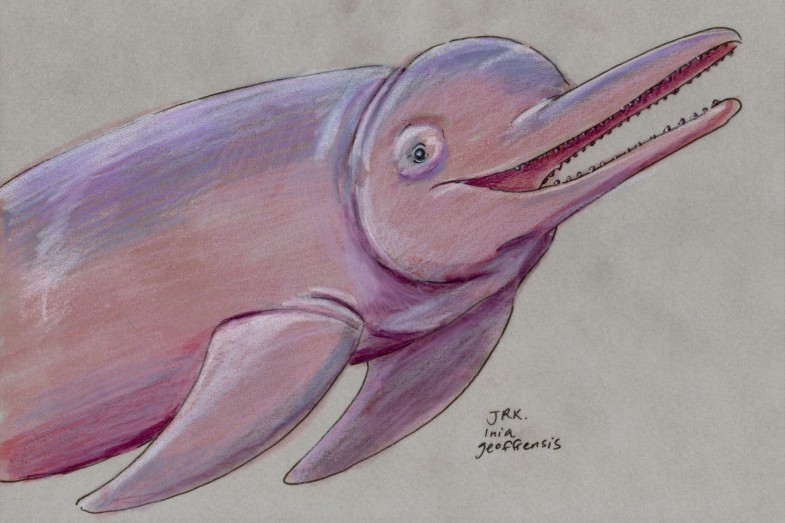Geoffroy Week: Boto (Inia geoffrensis)
The boto, or Amazon river dolphin, was described and named by a French zoologist called Henri Marie Ducrotay de Blainville. The Eponym Dictionary of Mammals tells us that de Blainville “was one of Cuvier’s bitterest rivals.” I talked a little about Cuvier’s rivalry with Geoffroy in yesterday’s post about the lesser long-eared bat, and I wonder if de Blainville named this dolphin after Geoffroy in a the-enemy-of-my-enemy kind of way or simply to honor an important fellow scientist. In The Copepodologist’s Cabinet: A Biographical and Bibliographical History by David Damkaer, we learn that de Blainville began his career as a protege of Cuvier’s but eventually turned against him. The book says that “the basic difference between Cuvier and de Blainville was that Cuvier proceeded from facts to ideas, while de Blainville took the opposite and more risky approach.” Damkaer writes, “The pupil is remembered for some remarkably ungrateful early statements to Cuvier: ‘I shall take my seat one day at the Institute and at the Museum, beside you, in face of you, and in spite of you.’” Apparently Cuvier ignored de Blainville’s provocations for the most part and continued to support de Blainville’s career. We’ve already met Cuvier’s beaked whale here on the Daily Mammal, and one day we’ll meet de Blainville’s.
Botos live in the Amazon and Orinoco river systems, in Bolivia, Brazil, Colombia, Ecuador, Peru, and Venezuela. Babies are born gray and turn pink as they get older, but how pink may depend on the opacity of the rivers they swim through. In some places, they are only barely blushing. There’s something completely magical about a pink river dolphin, isn’t there? Their pink skin shines in the flooded forest they swim through.
Like bats, the boto uses echolocation to hunt, dining on fish, crabs, and crustaceans. Unlike other river dolphins, the boto’s neck vertebrae aren’t fused. As it echolocates, it bends its head this way and that to get a better sense of things. The International Union for the Conservation of Nature rates the boto as “data deficient” on its endangerment scale. We just don’t know how many of them there are or how much trouble they’re in, but they are threatened by the damming of rivers, by pollution, and by fishermen who sometimes kill them deliberately in order to attract fish and accidentally through indiscriminate use of nets and explosives.


You should check your facts about skin color. Unlike the beluga whales, their skin never turns white.
That particular fact came from the American Cetacean Society, but I don’t see it anywhere else. Other sources say that the depth of color depends on the opacity of the river they’re in. I’ll change it in the text.